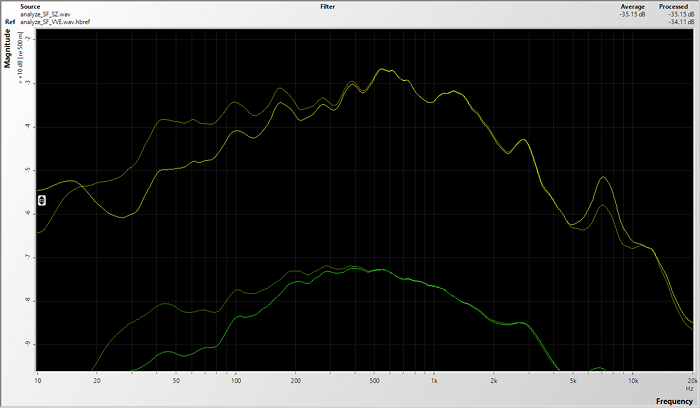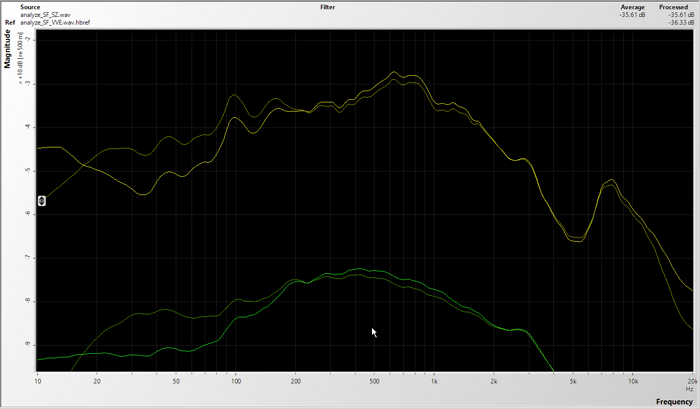SoundField SPS200
Background
Why have I bought a SoundField SPS200, when I am already an enthusiastic user of a TetraMic? Well, two reasons. Primarily, I wanted to get a quieter microphone for a project (which I won't describe here) which requires extremely quiet backgrounds; noise reduction is the unavoidable order of the day, but clearly starting with a quieter signal reduces the difficulty of doing it well, to some extent. But also: curiosity - and it provides a backup.
I am still using the TetraMic as my main microphone, but I have used the two together on a number of sessions, so that I could compare them.
The SoundField A-format processing software (SurroundZone) has no provision for individual calibration of the microphones, presumably relying on precision and consistency of the capsules, which are made by the German firm MBHO (Haun) which was set up by engineers from Schoeps. (MBHO also manufacture the capsules for the older SoundField designs, using the original production jigs; they started this at about the same time as the SPS200 was introduced.) However, with no built-in electronics for alignment, the requirement for individual calibration of A-format microphones like the TetraMic and the SPS200 has been assumed in the ambisonics community.
Core Sound offer a calibration service which can be used for the SPS200 (and also for the Sennheiser Ambeo), and they have performed this calibration for me. This page includes some comparisons between the TetraMic and the SPS200 in both calibrated and uncalibrated form.

Delivery
The microphone comes in a very robust hard plastic flight case with a firm cut foam insert for the microphone and shock mount. The insert lifts out to reveal the 10' or so cable that plugs into the microphone at one end and breaks out to four XLRs at the other end. Unlike the TetraMic, the initial amplifiers are in the microphone body, so the signals are balanced all the way.
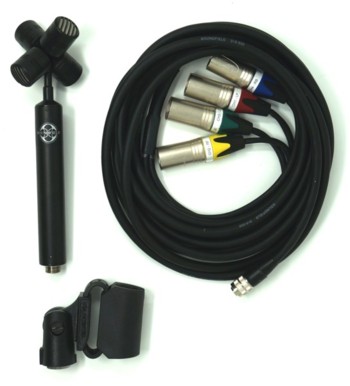
Here are the entire contents of the case: microphone, rather stiff shock mount, and the 10' breakout cable.
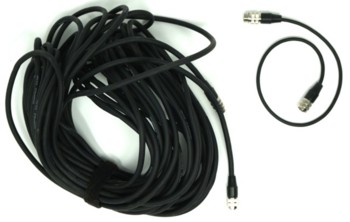
There were two essential extras which I also bought. First was a 25m extension cable to go between the microphone and the breakout cable (I could have used my existing 4-way snake, but this cable is much less bulky). Second was a short thinner cable (which they call a Rycote cable), because the other cables are stiffer than seems sensible when mounting the microphone, as I do, in a soft Rycote shockmount. I also got (not pictured) a Rycote Ball Gag windshield which fits snuggly on the microphone without any adapter.
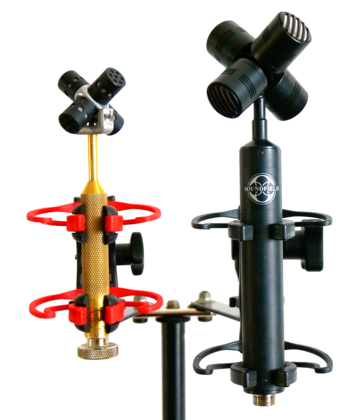
The SoundField SPS200 is a much heftier microphone than the notably petite TetraMic. This is down to both the larger capsules and the fact that the body is large enough to contain four channels of electronics.
Comparisons
The SPS200 is a very good microphone. Any differences between it and the TetraMic are naturally most important when viewed from the perspective of use for ambisonics specifically.
The first, obvious, difference is the size of the tetrahedral array. The spacing of the capsules is more than 50% greater in the SPS200 than in the TetraMic. This means that the inherent deterioration of the patterns of the B-format signals at high frequencies will start at a lower frequency, and thus have more impact on the imaging than in the smaller microphone. To be honest, this is not apparent to me - but then most of my recordings are highly reverberent, and also my listening room has poor acoustics, which doesn't help. Others may be able to find the differences in my samples.
The next difference, which is the reason I bought the microphone, is the lower self-noise. Used with my recorders, the SPS200 is 3.5dB quieter than the TetraMic, and has 4dB higher output. I made my measurements on the A-format signals, but they should transfer pretty directly to the B-format.
Finally, there is the matter of frequency response or tonal quality. When calibrated by Core Sound, these should match the TetraMic closely; but I was also interested to see the difference that calibration made. Rather than attempt to rely on my ageing ears to describe the differences qualitatively, I have made some measurements which I will present as graphs.
I took seven varied tracks recorded in four different venues (three chapels and a domestic living room), with the microphones in three different orientations (upright, inverted, endfire). The distance between the microphones varied from about 20cm to about 5cm. I generated three sets of B-format files, for the TetraMic, the SPS200 calibrated by Core Sound (described as SF VVE on the graphs below), and the SPS200 processed using SoundField's SurroundZone II plugin (SF SZ). I took the W and Y channels of all the tracks and used the Har-Bal program to generate spectra which were then plotted alongside a reference, using a resolution of 1/3 octave. It should be noted that my TetraMic is eleven years old now, and has not been recalibrated in that time - Core Sound now recommend occasional recalibration, and my microphone is on the way to them at present; if there has been any material change (whether in the microphone or in the calibration process), I will update the results here accordingly.
Listening to and looking at the results, I am happy to have got the calibration done. It is up to others to decide whether they feel the same. The basic quality of the SPS200 shows though; it would be interesting to see similar comparisons using the much cheaper Sennheiser Ambeo and upcoming SoundField NT-SF1 microphones.
Samples for listening; also used for the analysis below.
Here are links to download the B-format files for your own listening comparisons. Note that the Moeran track is very noisy because the church had turned its fan-driven heating up to full and locked the control panel! I included the track deliberately to provide a section of something approaching pink noise.
Download zips of B-format files: TetraMic, SPS200 calibrated, SPS200 SurroundZone.
Program:
Dubois - Seven Last Words of Christ, Sixth Word (chapel of Exeter College, Oxford)
Elgar - Sea Pictures, i, In Haven (chapel of Harris-Manchester College, Oxford)
Elgar - The Spirit of the Lord (chapel of Harris-Manchester College, Oxford)
Farrar - Silent Noon (St Margaret's Church, Oxford)
Moeran - To Daffodills (St Margaret's Church, Oxford)
Poulenc - Sept répons de ténèbre, vi (chapel of Exeter College, Oxford)
Satie - 3 Morceaux en forme de Poire, III (domestic living room)
Graphs of the overall spectrum
The graphs below show the spectral response, with 1/3-octave resolution, over all the recordings. Each pair of images consists of the graphs for W and then Y as a representative figure of eight. In each graph, the strong line is the device being tested and the pale line is the reference. The yellow graphs are based on peak responses in the analysis times windows, and the green ones on overall averages.
Display of calibrated SPS200 against TetraMic as reference
These track very well, except for the extreme bass (below 50Hz) in which the TetraMic is stronger. This could be because the TetraMic is eleven years old, or because of refinements in the calibration procedure over the same interval. I will know better when I receive the updated calibration for my TetraMic. It is interesting that there is a slight peak in the difference between the two microphones at about 8kHz in the Y plot which barely shows in the W plot. This is the part of the spectrum where the microphones will be behaving differently because of the difference in capsule spacing.
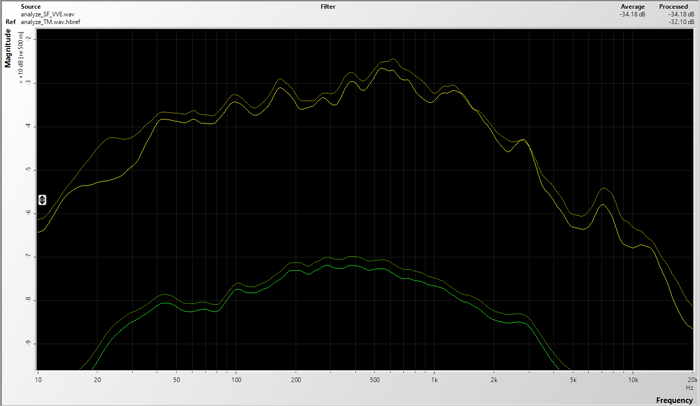

Display of SurroundZone output against calibrated SPS200 as reference
In this case the uncalibrated output from SoundField's own processing is compared with the result of using Core Sound's calibration. In effect we are displaying the error in the uncalibrated output, assuming that the calibration is good. They actually track well down to about 300Hz, but then the uncalibrated output falls away compared with the calibrated one (except below 20Hz - it seems that SurroundZone provides no LF filtering). Again, note the slight difference between W and Y graphs in the divergences around 8kHz. Since only one microphone is involved here, I wonder if Core Sound's calibration makes an assumption about capsule spacing.
